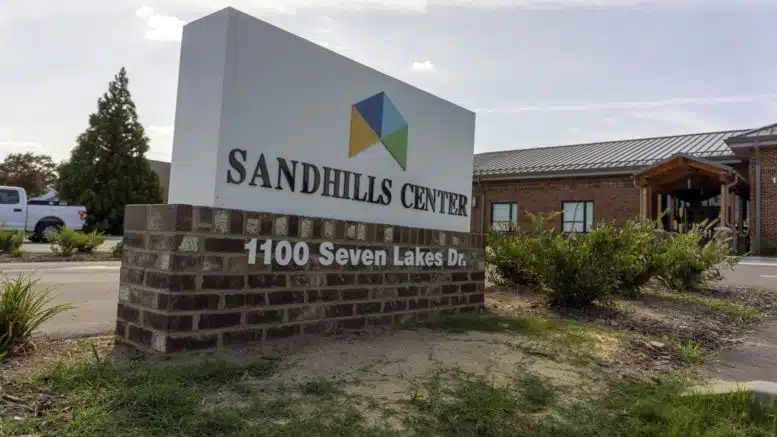By Taylor Knopf
In an effort to streamline the public mental health care system in North Carolina, the state Department of Health and Human Services is reducing the number of state-funded regional behavioral health management companies from six to four. These groups — known as LME-MCOs — have been responsible for managing mental health services for uninsured patients and people receiving Medicaid for a decade.
The state budget, passed in September, gave the state health department secretary increased authority over the LME-MCOs. Health leaders in the General Assembly say they’ve received many complaints about the services available through the LME-MCOs. This has happened in an environment where lawmakers have struggled to control the groups that manage state dollars and services.
During budget negotiations this summer, lawmakers said they discussed the future of the state-funded mental health system and wanted to see a reduction in the number of LME-MCOs with a key goal of successfully launching tailored plans by July of next year. The rollout of tailored plans — intended to provide more intensive services to approximately 143,000 Medicaid recipients with complex mental health needs and/or intellectual and developmental disabilities — have been delayed multiple times at the LME-MCOs’ request.
Last week, DHHS Secretary Kody Kinsley issued a directive that reduces the number of LME-MCOs, reassigns several counties to different LME-MCOs and sets an aggressive timeline for putting these changes in place. The directive dissolves Sandhills Center, the LME-MCO that served 11 counties in the southern Piedmont, and instructs Eastpointe and Trillium Health Resources to consolidate to cover the entire eastern half of the state.
The directive reassigns the majority Sandhills’ counties to the consolidated Eastpointe/Trillium LME-MCO with three exceptions. Effective immediately, Davidson County will be served by Partners Health Management; Harnett County will be served by Alliance Health; and Rockingham County will be served by Vaya Health.
Moving from six LME-MCOs to four: Vaya, Partners, Alliance and Trillium/Eastpointe
Vaya (32): Alamance, Alexander, Alleghany, Ashe, Avery, Buncombe, Caldwell, Caswell, Chatham, Cherokee, Clay, Franklin, Graham, Granville, Haywood, Henderson, Jackson, Macon, Madison, McDowell, Mitchell, Person, Polk, Rockingham*, Rowan, Stokes, Swain, Transylvania, Vance, Watauga, Wilkes, Yancey
Population total: 1,827,784
Partners (15): Burke, Cabarrus, Catawba, Cleveland, Davidson*, Davie, Forsyth, Gaston, Iredell, Lincoln, Rutherford, Stanly, Surry, Union, Yadkin
Population total: 2,215,066
Alliance (7): Cumberland, Durham, Harnett*, Johnston, Mecklenburg, Orange, Wake
Population total: 3,510,495
Trillium/Eastpointe (46): Anson, Beaufort, Bertie, Bladen, Brunswick, Camden, Carteret, Chowan, Columbus, Craven, Currituck, Dare, Duplin, Edgecombe, Gates, Greene, Guilford, Halifax, Hertford, Hoke, Hyde, Jones, Lee, Lenoir, Martin, Montgomery, Moore, Nash, New Hanover, Northampton, Onslow, Pamlico, Pasquotank, Pender, Perquimans, Pitt, Randolph, Richmond, Robeson, Sampson, Scotland, Tyrrell, Warren, Washington, Wayne, Wilson
Population total: 3,102,586
*county changes effective immediately under new directive
Data courtesy: Office of State Management and Budget/ 2022 census data
By consolidating the LME-MCOs, state officials hope for a more timely, successful launch of the tailored plans, as well as more streamlined mental health services across the four regions of the state.
“These structural and systematic changes will put us on the right path not just for launch [of tailored plans], but for better care and better services for people,” Kinsley said during an interview with NC Health News. “This is a top priority for us. And they need to pull it off. And I want to emphasize that we’ve really tried to build this around their strengths.”
Big changes in eastern NC
Eastern North Carolina will see the largest changes as three formerly separate LME-MCO catchment areas merge into one.
The consolidated Eastpointe/Trillium LME-MCO — which will include the majority of Sandhills’ former counties — will serve a total of 46 counties. Though it’s nearly half of the state’s counties, the counties are largely rural. Though the new consolidated LME-MCO will be the largest in terms of geography, it will still serve a smaller population than Alliance, which serves seven counties that are the state’s largest urban hubs.
Kinsley said the department’s plan was built on Sandhills and Eastpointe’s request to merge earlier this year.
“I wouldn’t think so much about it as Sandhills being dissolved,” Kinsley said. “Really this is about building on the merger that they proposed, while taking into account that some of the counties wanted to look into a slightly different direction, and it was justified because the people in their communities are frankly getting care more in those other catchment areas already.”
Additionally, he said, Sandhills struggled to secure provider contracts for the tailored plans while other LME-MCOs were making significant progress on their contracts. In an update to lawmakers in March, DHHS also identified Sandhills as the only group that had not started testing a system to process claims for health provider payments and authorizations.
Meanwhile, Kinsley said Eastpointe and Trillium share similar regions of the state and some of the same health providers, meaning that consolidation of the groups would simplify things from an administrative standpoint. He said the LME-MCOs also share some “complementary strengths.”
“Trillium has some phenomenal strengths in the way that they serve kids,” he said. “They have done work on crisis services and thought really creatively about rates and in-lieu-of services.”
Kinsley said that Eastpointe built a “top-notch integrated claim system” that he anticipates will serve their community well under the new consolidated LME-MCO.
Leaders at Sandhills and Trillium didn’t provide a comment on the secretary’s plan by the time of publication. Eastpointe’s CEO Sarah Stroud said in an emailed statement that the LME-MCO’s leadership is “reviewing Secretary Kinsley’s directive and working in collaboration with the team at DHHS on next steps.”
‘Less is more’
Reducing the total number of LME-MCOs to four gives them larger populations to work with, which Kinsley said should help the groups build out their health provider networks.
“We needed to make sure these tailored plan operators were serving enough people that they would have the market power they needed and a big enough risk pool to do innovative and creative things,” he said.
On their own, LME-MCOs such as Sandhills and Eastpointe served smaller populations compared to their counterparts. Kinsley said he and his team members talked with consumers, providers, county leadership, advocates and LME-MCO leadership for a year leading up to the decisions released in last week’s plan.
“As an association, we have taken a position that less is more,” said Karen McLeod, CEO of Benchmarks, an umbrella nonprofit organization that advocates for groups that provide care for children and families.
“Currently, there’s too many [LME-MCOs], and it’s too many for a number of reasons,” she said. “One is economy of scale for them, but the other is just the administrative burden it places on providers managing through six of them.”
She also pointed out that the LME-MCOs are also having to work with five insurance companies that are now administering the state’s Medicaid managed care contracts across the state.
“That is a massive undertaking to navigate billing and credentialing and all the things that they have to do to provide services through that many managed care companies for North Carolina,” she said.
In 2013, when the LME-MCO system was created for the public mental health system, there were 11 groups. Standardization of services has been an issue.
“When you’re trying to do anything where you’re looking at creating standardization across all of them, less is a lot easier to do that with than more,” McLeod said. “And especially when you have the four that will be left have already shown their commitment to work with each other and to potentially look at ways that they could increase the standardization across them.”
In reassigning some counties to new LME-MCOs, Kinsley said his team kept in mind: Where do people live and where did they get care? The directive states that the plan create “more contiguous health regions.”
For example, Harnett County was formerly served by Sandhills, even as Kinsley said that residents near the border of Harnett would often travel to Wake or Cumberland counties for care. Alliance already serves the latter two, so adding Harnett to the LME-MCO’s catchment region made sense, he explained.
“This map that we currently have has evolved over time based on a lot of marginal decisions,” he said. “We wanted to try to move us forward in a direction that really wrapped these regions of service around the people — where they live and go for care.”














